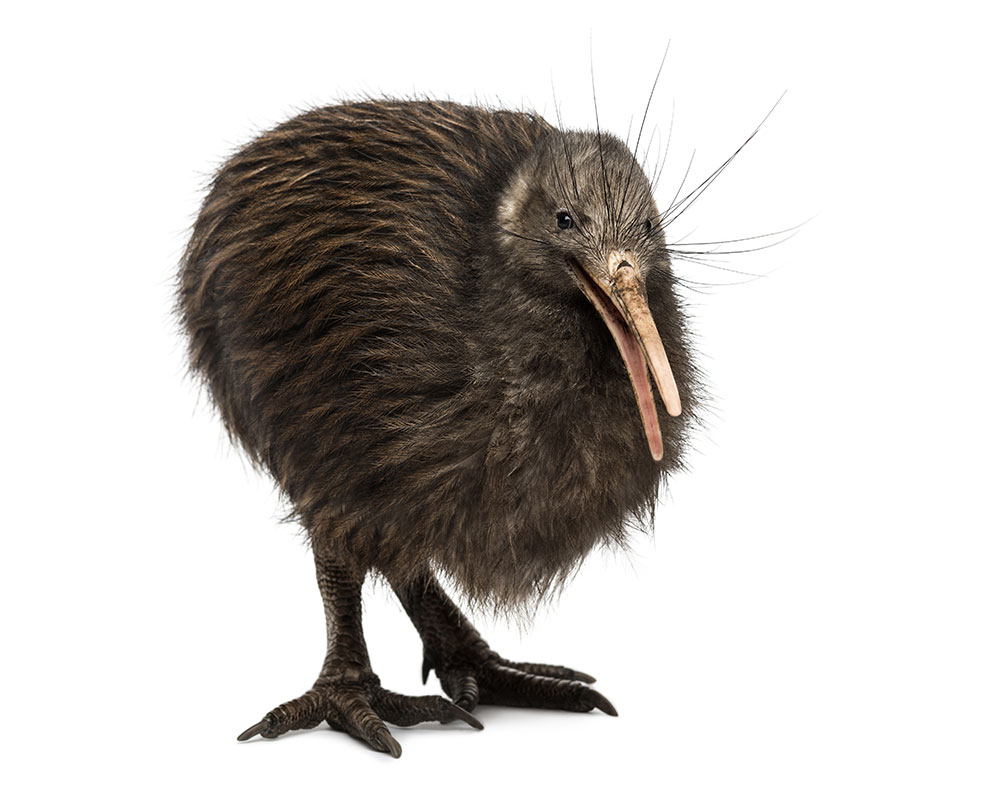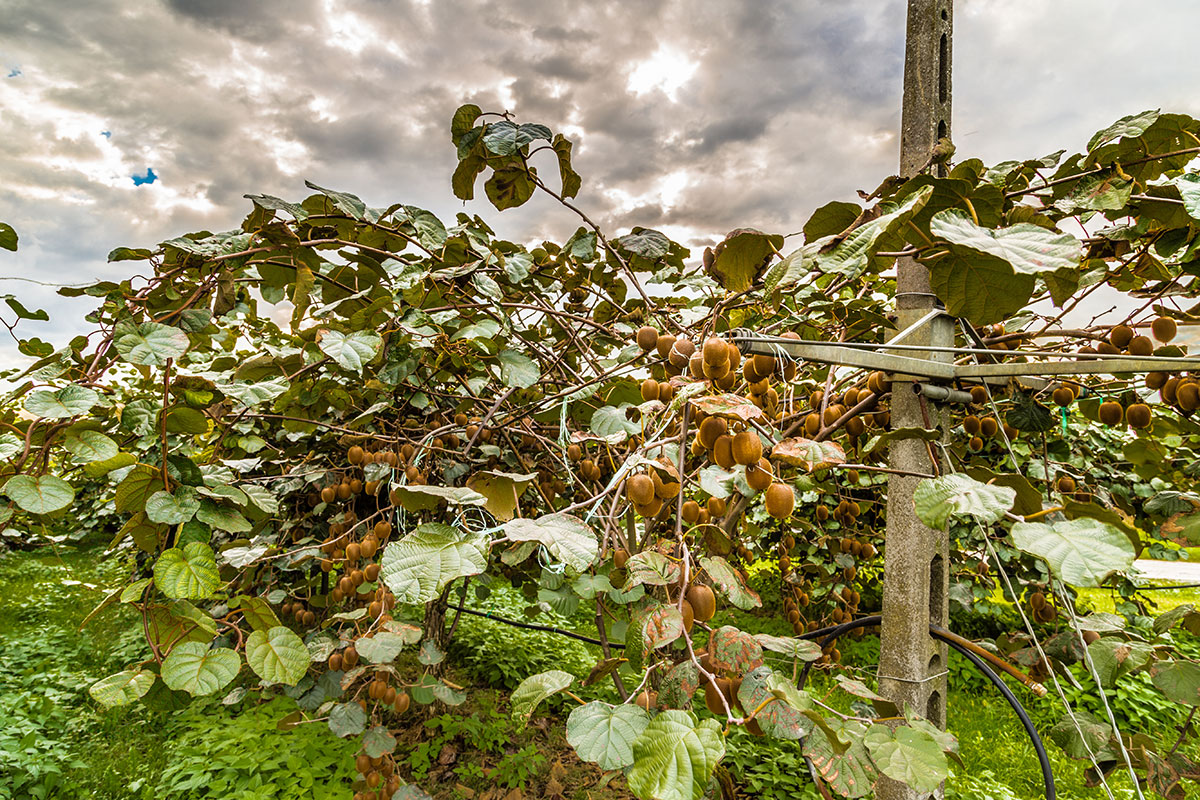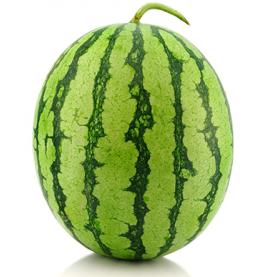Kiwi fruit
Kiwi fruit has been known in China for thousands of years, but was first brought to New Zealand in 1904, where it was improved and grown on plantations. Kiwi fruit began to be exported to Europe and the Americas in the latter half of the 20th century. Still considered exotic in the 1980s, it has since become a popular, everyday fruit and is now cultivated around the world. Alongside green kiwi fruit, other varieties have now been developed.
Conquering the world
Kiwi fruit is native to South-East China, where it grows in the wild. It was already mentioned in poems written in the 1st millennium BCE. It has been recorded as being cultivated from the 8th century BCE. It was first brought to France in the 1740s, but did not arouse any particular interest. In the late 19th century, kiwi fruit plants were introduced into Europe, then to the US, but the kiwi fruit remained a curiosity and only interested botanists because of its beautiful shape.
New Zealand discovered this fruit in 1904 and would play a decisive role in distributing it. It was known as the ‘Chinese gooseberry’ at that time and, once it had acclimatised, it began to be cultivated. The first cases of fruit arrived in the United Kingdom in 1952. As it was difficult to promote ‘Chinese gooseberries’ in the US in the midst of the Cold War, the fruit was renamed kiwi fruit, after the New Zealand bird.
An intensive advertising campaign in 1974, helped market kiwi fruit throughout Europe. Although still an exotic and expensive fruit in the early 1980s, kiwi fruit became standard in the 1990s. Its high Vitamin C content was undoubtedly an added bonus to make it marketable. Following in New Zealand’s footsteps, many other countries began to cultivate it and have become major producers. Kiwi fruit has well and truly made itself at home throughout the world.
A climbing plant which comes in many varieties
Kiwi fruit belongs to the Actinidia genus, a climbing vine which is trained to a trellis when cultivated. There are some fifty species in this genus, with a wide variety of fruit. Actinidia can have yellow, orange or green flesh, and smooth or furry skin.
The New Zealanders obtained larger fruit through selection. The most familiar, the green-fleshed kiwi fruit named Hayward after its inventor, was developed in 1928. It has become virtually synonymous with the green kiwi, even though other green-fleshed varieties exist, and clearly dominate the international market. Professionals also began developing yellow-fleshed kiwi fruit, especially in China. During the first decade of the 21st century, the New Zealand variety Zespri Gold kiwifruit began to mark out a place for itself. Its brown skin is almost smooth and its golden-yellow flesh has a slightly acidic taste.
The kiwaï (Actinidia arguta) is another species of Actinidia. It is the size of a cherry tomato and can be eaten without being peeled. Hardy kiwis (Actinidia kolomikta) withstand cold winter weather, down to minus 25°C, whereas other kiwi fruit cannot tolerate temperatures below minus 12°C.
Once picked, kiwi fruit can be stored in a cool, dry place for eight weeks. They can keep for four to six months at temperatures below 0°C. In New Zealand, the fruit is harvested in May and imported during the summer. In Europe, harvesting takes place mainly in November. Since kiwi fruit is cultivated in both hemispheres, the market is supplied continually.
Uses of the kiwi
Kiwi fruit is eaten as it is, or added to various desserts. It can garnish starters, cakes or tarts and goes well with meat, poultry and fish. It can also be made into jam or alcohol.
Bonnassieux, Marie-Pierre, 1988. Tous les fruits comestibles. Paris : Éditions Bordas.
D’Amico, Serge (red. en chef), 1997. L’encyclopédie des aliments. Paris : Éditions Fontaine.
Divincenzo, Maria Vittoria, 1987. Les fruits et les légumes. Paris : Éditions Solar
Yan, Jianying, 1981. Histoire d'Actinidia chinensis Planch, et conditions actuelles de sa production a l'étranger. Journal d'agriculture traditionnelle et de botanique appliquée [en ligne]. Volume 28, n°3. pp. 281-290. [Consulté le 18 février 2016]. Disponible à l’adresse : https://scholar.google.ch/scholar?hl=fr&q=histoire+du+kiwi&btnG=&lr= - persee.fr
Lespinasse, Yves, 2015. Le kiwi (Actinidia sp.) : origine, biologie florale et diversification variétale. [en ligne]. Paroles d’experts, Jardins de France. N°635. Mai-juin 2015. SNHF | Société Nationale d’Horticulture de France. [Consulté le 18 février 2016]. Disponible à l’adresse : http://www.jardinsdefrance.org/le-kiwi-actinidia-sp-origine-biologie-florale-et-diversification-varietale/









